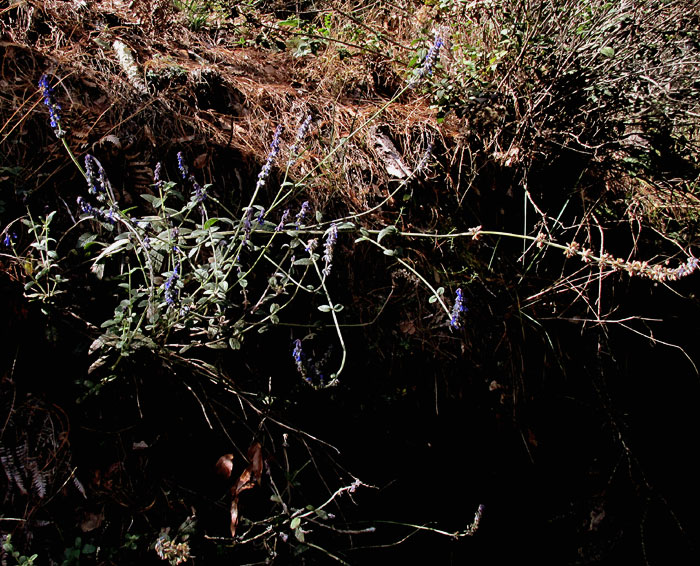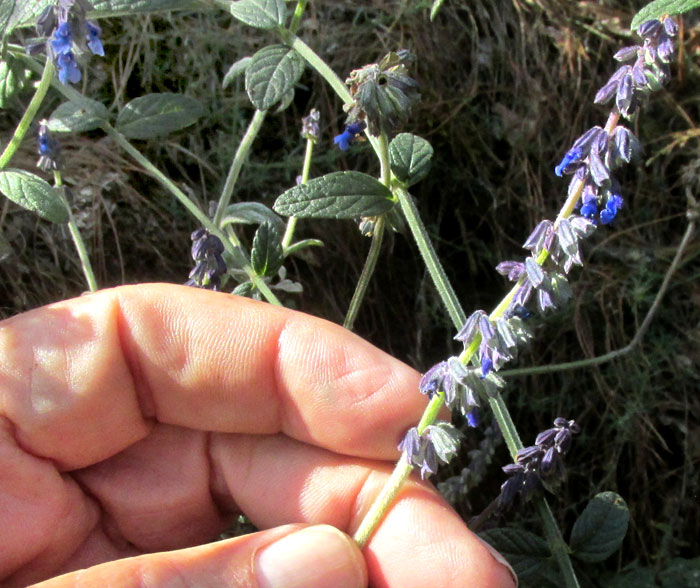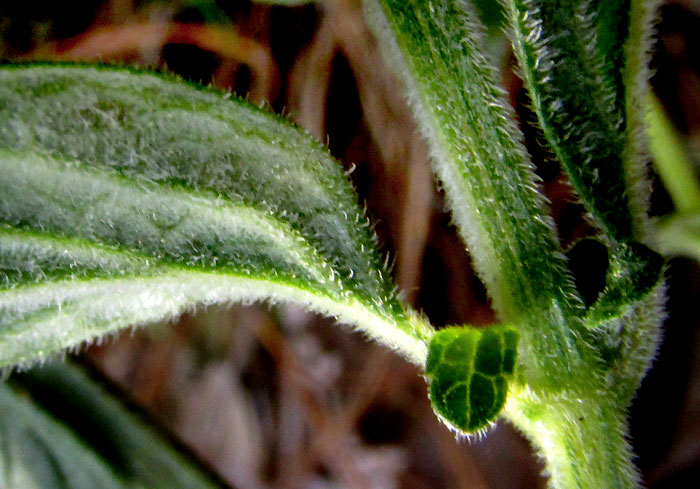Excerpts from Jim Conrad's
Naturalist Newsletter
entry from field notes dated January 19, 2023, taken along steep, one-lane gravel road ascending forested, northeast-facing mountain slope, elevation ±2,380m (7600 ft); bedrock of Cretaceous limestone; on the south side of Pinal de Amoles, Querétaro state, MÉXICO, (N21.134°, W99.629°)
SALVIA HELIANTHEMIFOLIA

The above lanky, sprawling herb grew from atop a small roadcut beside a narrow trail, in a place often shaded by tall pines. Up close, the plant displayed a stem square in cross-section, leaves growing opposite one another on the stem, and an inflorescence in which the small flowers gathered in whorls along the rachis called verticillasters. It was a member of the big Mint Family, the Lamiaceae:

Up closer, the corollas displayed a special kind of bilateral symmetry, with a scoop-like upper lobe heavily invested with glandular hairs:

It was yet another species of sage, genus Salvia, and often sages are hard to identify. For, estimates of the number of Salvia species worldwide range from 700 to nearly 3000. Jesús G. González-Gallegos and others, in their 2020 work entitled "Richness and distribution of Salvia subg. Calosphace (Lamiaceaea)," tell us that just in the subgenus Calosphace, which is home to a bit more than half the world's Salvia species, about 580 species are recognized, with 295 of those occurring in Mexico. Needing all the details we could get for identification, here's a typical leaf:

I can't explain the tiny brown bumps scattered across the leaves' surfaces; maybe scale insects or insect eggs. The leaf's undersurface and the stem were soft-hairy:

With regard to identifying Salvia species, especially here in the Mexican highlands, once a researcher pays close attention, it appears that Salvia is undergoing a mind-boggling explosion of speciation. Among documented species are some collected only in certain small areas, maybe a range of mountains or a valley. On the Internet I can find many species similar to our plant, but none entirely fitting the descriptions or locations where the species are found.
I had trouble identifying this species using available literature. In the end it took "xanergo" on iNaturalist to come up with the name SALVIA HELIANTHEMIFOLIA, which appears to match dried and pressed specimens of that species appearing online, though with herbarium sheets it's hard to say what the fresh flowers look like.
Kew's Plants Online Wordwide reports that the species is present in this general region. I've seen it listed as occurring in neighboring Michoacán state. Other than that, I find no accessible literature on the species.